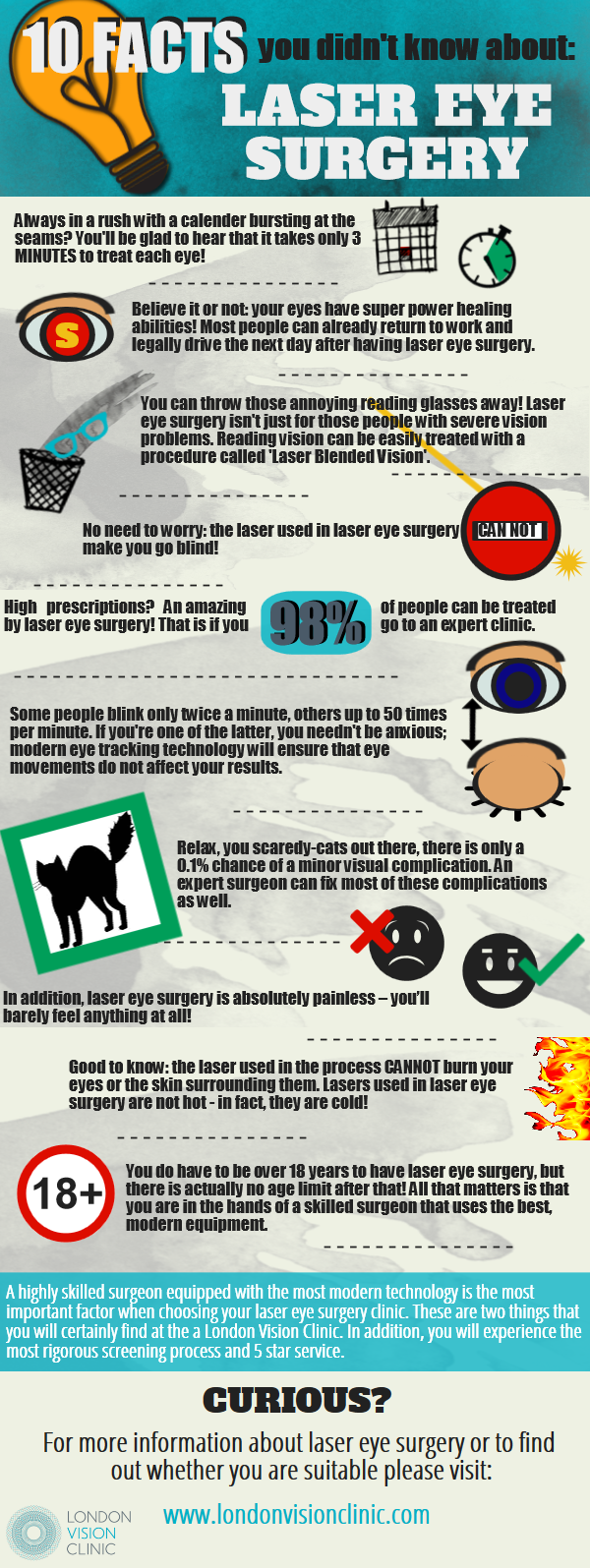Assessing The Benefits And Negative Aspects Of Traditional Cataract Surgical Treatment Versus Laser-Assisted Techniques
Assessing The Benefits And Negative Aspects Of Traditional Cataract Surgical Treatment Versus Laser-Assisted Techniques
Blog Article
Content Author-McGraw Bach
When considering the selection between conventional cataract surgical treatment and laser-assisted methods, you might find yourself considering the advantages and downsides each technique supplies. The decision surpasses the surface level of price and precision, delving into the realm of long-lasting end results and individual satisfaction. As you browse with the complexities of these two methods, it comes to be essential to recognize the nuanced details that can significantly affect your aesthetic quality and overall experience. Keep tuned to uncover the critical aspects that will guide your decision-making procedure in this important element of eye treatment.
Typical Cataract Surgery Benefits And Drawbacks
When taking into consideration traditional cataract surgical treatment, you may find that it's a well-established and widely-used method. In this procedure, a doctor makes a little cut in the eye and uses ultrasound to break up the cloudy lens prior to removing it. As soon as the cataract is removed, a fabricated lens is placed to restore clear vision.
Among how long does it take to see again after cataract surgery of typical cataract surgical treatment is its record of success. Lots of individuals have had their vision substantially improved through this treatment. Furthermore, https://baltimore.cbslocal.com/2021/01/27/smile-laser-eye-surgery-becoming-increasingly-popular-as-glasses-users-deal-with-mask-fog-amid-covid-19-pandemic/ is commonly covered by insurance coverage, making it a much more obtainable option for lots of people.
However, there are some disadvantages to traditional cataract surgical treatment also. Healing time can be longer compared to more recent strategies, and there's a slightly higher danger of problems such as infection or swelling. Some patients may also experience astigmatism or need analysis glasses post-surgery.
Laser-Assisted Techniques Benefits And Drawbacks
Discovering laser-assisted techniques for cataract surgical procedure reveals a modern-day strategy that utilizes laser modern technology to do vital action in the treatment. One of the key advantages of laser-assisted cataract surgery is its accuracy. The laser allows for exceptionally accurate lacerations, which can lead to much better aesthetic outcomes. In addition, the use of lasers can lower the amount of ultrasound power needed throughout the surgical treatment, possibly decreasing the risk of difficulties such as corneal damage.
On the disadvantage, laser-assisted techniques can be more expensive contrasted to typical methods. This expense mightn't be covered by insurance, making it much less available to some individuals.
One more factor to consider is that not all cataract doctors are learnt laser innovation, which can limit your choices for picking a doctor.
Last but not least, while the laser can automate specific facets of the procedure, the surgical treatment still needs a skilled specialist to guarantee successful results.
Comparative Evaluation of Both Approaches
For a thorough understanding of cataract surgery techniques, it's important to conduct a relative analysis of both typical and laser-assisted methods.
Standard cataract surgical procedure entails manual cuts and the use of handheld devices to break up and get rid of the cloudy lens.
On the other hand, laser-assisted cataract surgery makes use of innovative modern technology to create precise cuts and separate the cataract with laser energy before removing it.
In terms of precision, laser-assisted techniques provide a higher level of precision contrasted to traditional methods. Using lasers enables customization of the procedure based on each individual's eye anatomy, potentially causing far better aesthetic results.
Nonetheless, laser-assisted cataract surgical procedure tends to be more pricey than standard surgery, which might limit access for some clients.
While both approaches are effective in restoring vision impaired by cataracts, the option between standard and laser-assisted strategies often relies on factors such as cost, accuracy, and specific client needs.
Consulting with your ophthalmologist can help establish one of the most ideal technique for your cataract surgical treatment.
Verdict
Finally, when determining in between conventional cataract surgery and laser-assisted techniques, think about elements like expense, precision, and specific needs. Typical surgical treatment offers a tried and tested record and insurance protection yet may include longer recuperation times. Laser-assisted methods supply greater accuracy and modification yet can be much more expensive and not constantly covered by insurance coverage. Ultimately, the selection in between both approaches relies on what is most important to you and your specific situation.
